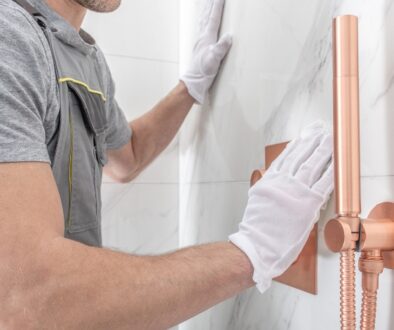Spring Safety Tips For Plumbing And HVAC Systems
After months of freezing temperatures and heavy furnace use, your pipes, water heater, and HVAC equipment may need attention to ensure everything is running safely and efficiently heading into summer. At Niebuhr, we believe that preventative care is one of the smartest ways to protect your home and avoid costly repairs. Below, we’ve outlined several spring safety tips that La Crosse homeowners can use to assess their plumbing and HVAC systems and prepare for the season ahead.
Spring Plumbing And HVAC Safety Tips
1. Inspect Outdoor Faucets And Pipes For Winter Damage
Freezing temperatures can take a toll on exterior plumbing. Even if you properly shut off and drained your outdoor faucets in the fall, it’s a good idea to double-check for signs of winter damage.
What to do:
- Turn on outdoor spigots and check for leaks or restricted water flow, which may indicate a cracked pipe.
- Look around the faucet and siding for moisture or discoloration.
- If you discover a leak, shut off the supply valve and contact a professional to prevent further damage.
Safety tip: Never use a damaged hose bib or spigot — it can cause interior flooding in wall cavities.
2. Check Your Sump Pump Before Spring Rains Arrive
Heavy spring rains are common in the La Crosse region, making it critical to ensure your sump pump is ready to handle the extra groundwater.
What to do:
- Pour a bucket of water into your sump pit to make sure the pump activates and drains correctly.
- Check that the discharge pipe is clear and directed away from your foundation.
- Clean any debris from the pit and test the backup battery (if applicable).
Safety tip: A failed sump pump can lead to basement flooding — testing it takes less than 10 minutes and can save you thousands in repairs.
3. Replace HVAC Filters And Clear Vents
Your HVAC filter works overtime during the winter, especially during periods of high usage. A clogged filter can reduce airflow, strain your system, and impact indoor air quality — especially during allergy season.
What to do:
- Replace your furnace or air handler filter, ideally every 6 months.
- Vacuum dust and debris from floor registers and air return vents.
- Make sure furniture or rugs aren’t blocking airflow to key vents.
Safety tip: Dirty filters increase fire risk and reduce HVAC efficiency. Replacing them regularly is one of the simplest safety measures you can take.
4. Clean Around Your AC Unit And Schedule A System Check
Before summer temperatures hit, now is the time to make sure your central air conditioner is ready to keep your home cool and safe.
What to do:
- Clear at least 2–3 feet of space around your outdoor condenser unit — remove leaves, branches, and other debris.
- Visually inspect the refrigerant lines for wear or damage.
- Make sure the disconnect switch (usually mounted on the wall nearby) is securely closed and free from corrosion.
Safety tip: Never attempt to open or clean internal components of your AC unit yourself. If something looks off or the unit won’t power on, schedule a professional inspection.
5. Test Your Water Heater’s Safety Features
Water heaters can quietly accumulate sediment and pressure issues over time. Spring is a smart time to check safety valves and temperature settings to avoid scalding hazards or malfunctions.
What to do:
- Test the temperature and pressure relief valve (T&P valve) by lifting the lever slightly — it should release some water and reset properly.
- Ensure the thermostat is set to 120°F or lower to prevent scalding and reduce energy consumption.
- Check the base of the tank for signs of leaks, rust, or pooling water.
Safety tip: If the T&P valve does not release water or won’t reset, it’s time to replace it — this valve is a critical safety feature that prevents tank over-pressurization.
6. Look For Signs Of Leaks Under Sinks And Appliances
Spring is the perfect time to take a fresh look around your home — especially under sinks, behind appliances, and around water connections.
What to do:
- Check under kitchen and bathroom sinks for dripping or moisture.
- Examine the floor near your dishwasher, washing machine, and refrigerator for warped flooring or moldy smells.
- Inspect hoses and connections on appliances and replace any that are brittle or cracked.
Safety tip: Even slow leaks can lead to serious water damage over time — and they often go unnoticed until it’s too late.
Final Thoughts
By following these safety tips for your home’s plumbing and HVAC systems, a few simple checks in spring can make a big difference when it comes to protecting your home from water damage, improving HVAC efficiency, and avoiding safety hazards. As a homeowner in the La Crosse area, staying ahead of these seasonal maintenance items ensures your plumbing and HVAC systems are ready for whatever spring and summer may bring.
If you encounter anything unusual during your spring safety check — from unexpected noises to signs of corrosion — don’t wait until it becomes a bigger issue. Proactive maintenance is key to keeping your home comfortable, safe, and running smoothly year-round.




